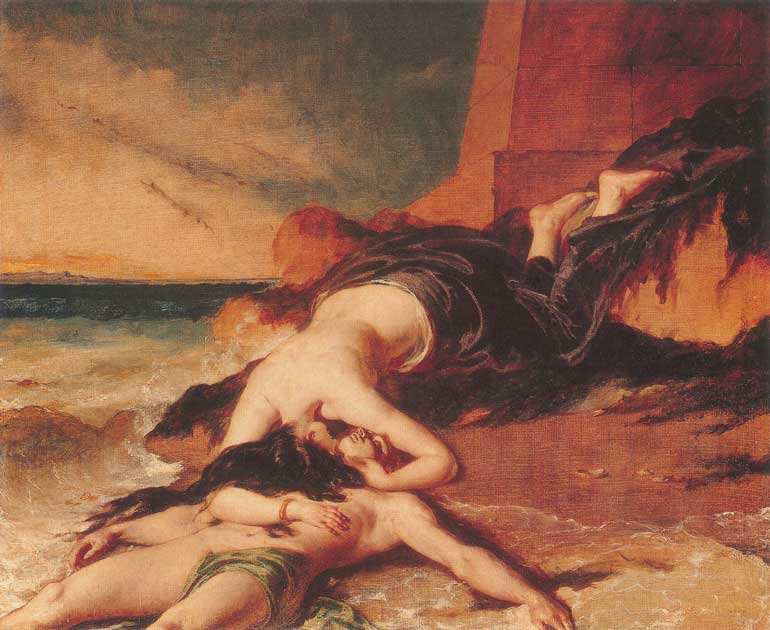Myth of Hero and Leander

Hero and Leander were famous lovers in Greek mythology. Hero, who lived in the town of Sestos, served as a priestess of the goddess Aphrodite* (Venus). Leander was a youth from the nearby town of Abydos, located across a narrow strip of water called the Hellespont. Hero and Leander met at a festival and fell in love. However, because she was a priestess of Aphrodite, Hero had to remain a virgin and was forbidden to marry. The two lovers decided to see each other secretly. Each night Hero would leave a lamp burning in a window of the tower in which she lived, and Leander would swim across the Hellespont, using the light to guide his way. One winter night, the wind blew out the flame in the lamp, causing Leander to lose his way and drown. The next morning, when Hero saw his lifeless body washed up on the shore, she killed herself by jumping out of the tower. Several ancient poets, including Ovid* and Virgil*, told the tale of Hero and Leander. In 1598 the English author Christ